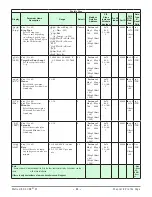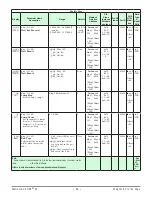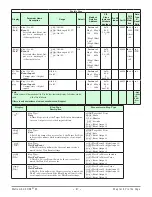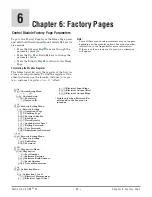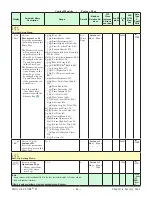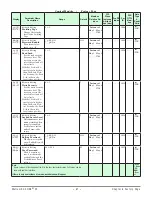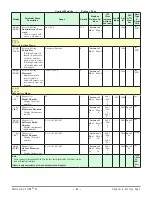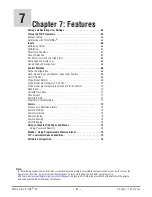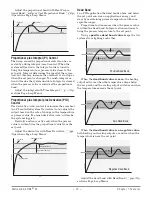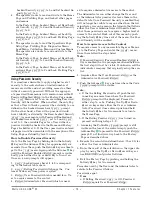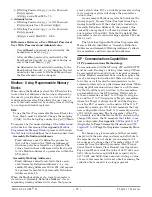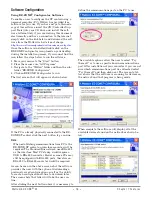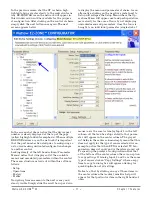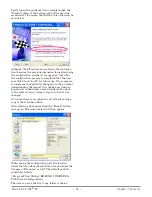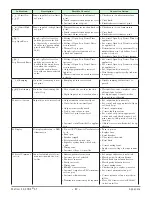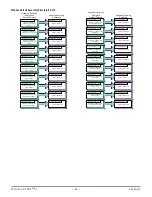
Watlow EZ-ZONE
®
ST
•
68
•
Chapter 7 Features
Select the sensor type with Sensor Type
[`Sen]
(Setup Page, Analog Input Menu).
Set Point Low Limit and High Limit
The controller constrains the set point to a value be-
tween a set point low limit and a set point high limit.
Set the set point limits with Low Set Point
[`L;SP]
and High Set Point
[`h;SP]
(Setup Page, Loop Menu).
There are two sets of set point low and high limits:
one for a closed-loop set point, another for an open-
loop set point.
Set Point Range (must be between Range High and Range Low)
Low Limit of selected functional range
High Limit of selected functional range
Gas Pressure
Range Low and Range High
Range High Range (between High Limit of Sensor and Range Low)
Range Low Range (between Low Limit of Sensor and Range High)
Set Point Low
Set Point High
Scale High and Scale Low
When an analog input is selected as process voltage
or process current input, you must choose the value
of voltage or current to be the low and high ends. For
example, when using a 4 to 20 mA input, the scale low
value would be 4.00 mA and the scale high value would
be 20.00 mA. Commonly used scale ranges are: 0 to 20
mA, 4 to 20 mA, 0 to 5V, 1 to 5V and 0 to 10V.
You can create a scale range representing other
units for special applications. You can reverse scales
from high values to low values for analog input sig-
nals that have a reversed action. For example, if 50 psi
causes a 4 mA signal and 10 psi causes a 20 mA signal.
Scale low and high low values do not have to match
the bounds of the measurement range. These along
with range low and high provide for process scaling and
can include values not measureable by the controller.
Regardless of scaling values, the measured value will
be constrained by the electrical measurements of the
hardware.
Select the low and high values with Scale Low
[`S;Lo]
and Scale High
[`S;hi]
. Select the displayed
range with Range Low
[`r;Lo]
and Range High
[`r;hi]
(Setup Page, Analog Input Menu).
Range High and Range Low
With a process input, you must choose a value to rep-
resent the low and high ends of the current or voltage
range. Choosing these values allows the controller’s
display to be scaled into the actual working units of
measurement. For example, the analog input from a
humidity transmitter could represent 0 to 100 percent
relative humidity as a process signal of 4 to 20 mA.
Low scale would be set to 0 to represent 4 mA and
high scale set to 100 to represent 20 mA. The indica-
tion on the display would then represent percent hu-
midity and range from 0 to 100 percent with an input
of 4 to 20 mA.
Select the low and high values with Range Low
[`r;Lo]
and Range High
[`r;hi]
(Setup Page, Analog
Input Menu).
Control Methods
Output Configuration
Each controller output (1, 2 and 3) can be configured
as a heat output, a cool output, an alarm output or de-
activated. No dependency limitations have been placed
on the available combinations. The outputs can be
configured in any combination. For instance, all three
could be set to cool.
Heat and cool outputs use the set point and Opera-
tions parameters to determine the output value. All
heat and cool outputs use the same set point value.
Heat and cool each have their own set of control pa-
rameters. All heat outputs use the same set of heat
control parameters and all cool outputs use the same
set of cool output parameters.
Each alarm output has its own set of configuration
parameters and set points, allowing independent op-
eration.
Auto (closed loop) and Manual (open loop) Control
The controller has two basic modes of operation, auto
mode and manual mode. Auto mode allows the control-
ler to decide whether to perform closed-loop control or
to follow the settings of Input Error Failure
[FAiL]
(Setup Page, Loop Menu). The manual mode only al-
lows open-loop control. The EZ-ZONE ST controller
is normally used in the auto mode. The manual mode
is usually only used for specialty applications or for
troubleshooting.
Manual mode is open-loop control that allows the
user to directly set the power level to the controller’s
output load. No adjustments of the output power level
occur based on temperature or set point in this mode.
In auto mode, the controller monitors the input to
determine if closed-loop control is possible. The con-
troller checks to make certain a functioning sensor is
providing a valid input signal. If a valid input signal is
present, the controller will perform closed-loop control.
Closed-loop control uses a process sensor to determine
the difference between the process value and the set
point. Then the controller applies power to a control
output load to reduce that difference.
If a valid input signal is not present, the control-
ler will indicate an input error message in the upper
display and
[Attn]
in the lower display and respond
to the failure according to the setting of Input Error
Failure
[FAiL]
. You can configure the controller to
perform a “bumpless” transfer
[bPLS]
, switch power to
output a preset fixed level
[MAn]
, or turn the output
power off.
Bumpless transfer will allow the controller to
transfer to the manual mode using the last power
value calculated in the auto mode if the process had
stabilized at a ±5 percent output power level for the
time interval of Time Integral (Operations Page, Loop)


